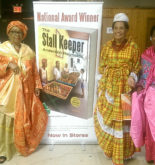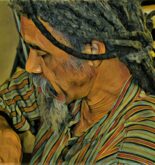by Dr. Anderson Reynolds & Alexander Clarke
As discussed in the second installment of the Youth Economy (Culture as an Engine of Economic Growth), culture represents an area of great potential for the development of the youth economy, and the government can play a key role in facilitating that process. But the government needs to be careful how it employs its meager resources.
To ensure that the cultural industry plays a significant role in advancing the youth economy, government resources need to focus on developing and strengthening the structure of the industry, for without adequate structure it will remain a fledging, sporadic, and frustrating sphere of activity that cannot be relied on to spur the youth economy. Yet as mentioned previously, considering that the youth are spontaneously drawn to and excited about art and culture, there is merit in pairing the youth economy with the cultural industry.
What do we mean by structure? Well, by way of example, consider that in the past the Cultural Development Foundation has given individual artists several thousand dollars to produce their music videos. Concentrating on structure means that if CDF had one set of money to spend on promoting artists, it may have been better spent (done greater good) on strengthening and augmenting the capacity (including equipment and training) of the filming and video production houses, which then would potentially serve all artist with higher quality videos matching international standards. The same holds true for music studios. CDF can give plenty of artists money to record their music. But if all the studios are mediocre through a lack of equipment, software, and know-how, then the music coming out of St. Lucia would be subpar and defeat the notion of the music industry serving as an engine for growing the youth economy. Therefore, CDF’s meager resources would go much further in advancing the music industry if, as opposed to direct grants to artists, it is spent on boosting the capacity of recording studios.
Derek Walcott couldn’t agree more on the role government ought to play in supporting art and culture. For years he advocated for government to at least establish a decent theatre and provide a couple of art scholarships per year. Here is him in an interview carried in the Paris Review lamenting the need for greater government involvement.
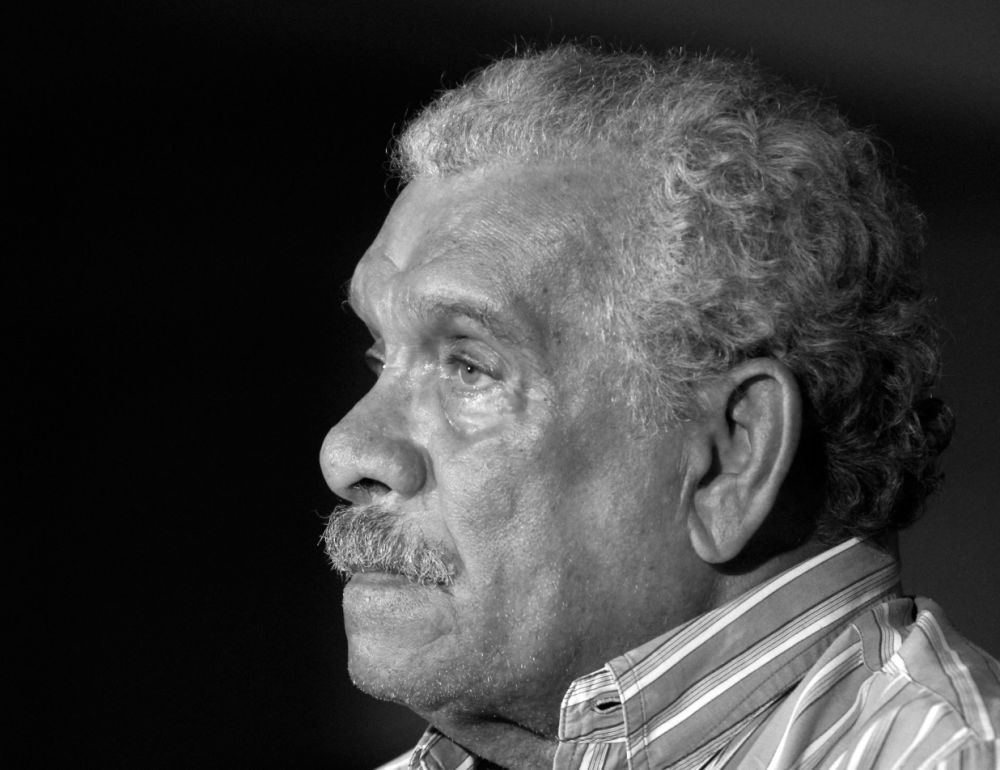
I’m fifty-five now and all my life I’ve tried to fight and write and jeer and encourage the idea that the state owes its artists a lot. When I was young it looked like a romance; now that I’m older and I pay taxes, it is a fact. But not only do I want roads, I want pleasure, I want art. This is the terrible thing in the Caribbean. The middle class in the Caribbean is a venal, self-centered, indifferent, self-satisfied, smug society. It enjoys its philistinism. It pays very short lip service to its own writers and artists. This is a reality every artist knows. The point is whether you say that and then turn your back on it and say to hell with it for life. I haven’t done that and I don’t think I’m capable of doing it.
What’s wrong is this: a legacy has been left by the British empire of amateurism. What we still have as an inheritance is that art is an amateur occupation. That attitude is combined with some of the worst aspects of bourgeois mercantilism, whether it is French, Danish, British, or Spanish bourgeois. The whole of the Caribbean that I can think of has this stubborn, clog-headed indifference to things around them. The philanthropy that exists in the Caribbean is negligible. Money is here—you just have to see the houses and the cars, and to look at the scale of living in any one of these islands—but nobody gives anything. If they do, I don’t know what they give to, but that penny-pinching thing is typical of the petty-bourgeois merchant, the hoarder of money.Without any bitterness I can say that anything that I have gotten, whether earned or not, has been from America and not from the Caribbean.
An artistic generation in this part of the world is about five years. Five years of endurance. After that, I think people give up. I see five years of humanity and boredom and futility. I keep looking at younger writers, and I begin to see the same kind of despair forming and the same wish to say the hell with it, I’m getting out of here.
There’s also a problem with government support. We have come to a kind of mechanistic thinking that says, a government concerns itself with housing, food, and whatever. There will always be priorities in terms of sewage and electricity. If only a government could form the idea that any sensible human being wants not only to have running water, but a book in hand and a picture on the wall. That is the kind of government I had envisaged in the Caribbean when I was eighteen or nineteen. At fifty-five, I have only seen an increase in venality, an increase in selfishness, and worse than that, a shallow kind of service paid to the arts.
I’m very bitter about the philistinism of the Caribbean. It is tough to see a people who have only one strength and that is their culture. Trinidad is perhaps the most concentrated example of a culture that has produced so many thousands and thousands of artisans at Carnival. Now Carnival is supported by the government, but that’s a seasonal kind of thinking. I’m talking about something more endemic, more rooted, more organic to the idea of the Caribbean. Because we have been colonies, we have inherited everything, and the very thing we used to think was imperial has been repeated by our own stubbornness, stupidity, and blindness.
The Need for Bookstores
In recent years there has been a proliferation of books authored by St. Lucians, most of whom are self-published. This is partly due to the advent of digital printing, which has made book printing a much more manageable and affordable enterprise for the self-published author. Unlike earlier methods of book printing such as letterpress and offset printing, digital printing is “designed to create one copy of a book at a time.” This technology has given rise to print-on-demand, thereby avoiding printing books in large quantities and the accompanying storage cost, since with this technology, the per-unit cost of producing a small number of books, or even one copy, is reasonable, and not greatly different than that of printing in large quantities. Indeed, with a cover design and typeset manuscript, an author can publish a book on Amazon without incurring any printing cost. And with email, social media, and the ubiquitous internet, authors can costlessly inform St. Lucians (the world, even) at home and abroad of their masterpieces.

But ironically, there are virtually no dedicated bookstores in St. Lucia. Dahlia Francois made a valiant effort establishing and operating 758 Books, but it was always an uphill battle. Exorbitant rent and COVID-19 took their toll. Forced to close down, 758 Books was the last of St. Lucia’s traditional bookstores. Very unfortunate, because bookstores are part of the structure of the book industry, and just when, thanks to technology, St. Lucians have plenty of books to sell, there are few proper and inviting outlets for their books. So in terms of structure, the government can facilitate the St. Lucia book industry and thus the cultural industry by teaming up with 758 Books and offsetting its rent.
The Need for the National Arts Award.
It was in 1979 that M&C, which was then controlled by the Devaux family, probably St. Lucia’s oldest white creole family, dating back to the 1740s, gave St. Lucia the M&C Crafts and Arts Awards as an independence gift. With this gift, each year deserving artists were presented with their prizes at a glitzy, awe-inspiring ceremony that was St. Lucia’s equivalent of the Academy, Tony, and Grammy Awards all rolled into one. I remember when my name was called to receive the 2001 M&C main literature prize for Death by Fire, I walked upstage, trembling legs, in full view of my fellow artists and a cross-section of St. Lucian society. Nervousness aside, it was a beautiful thing.

In 2005, after 25 years of administering the award, M&C handed it over to the department of culture though continuing to lend financial support. Accompanying a change of government, with much pomp and bluster the Department of Culture was rebranded the Cultural Development Foundation (CDF). The revamped guardian of St. Lucian culture quickly changed the format of the awards. Borrowing from Barbados, the one-night ceremony was turned into several weeks of activities that included theatre, art exhibitions, and performance poetry, and which culminated in the award night. The name of the awards was changed from the M&C Fine Arts Awards to the St. Lucia National Arts Awards. Also, as part of the rebranding process, CDF decided to professionalize its operations. So it replaced such cultural icons as Gandolph St. Clair and George Fish Alphonse on its staff with a cadre of younger, and possibly more formally educated personnel.
However, before long, CDF ran out of steam. The national arts Awards ceased. The annual Derek Walcott Nobel Lecture that comes under the auspices of CDF, which used to be a room-filled event and a highlight of the cultural calendar, has been reduced to a barely noticeable event with a handful of attendance. Today it seems CDF is mainly about the staging of National Day lantern of lights (please visit for a full account).
From the standpoint of the youth economy, we can draw several lessons from the CDF story. First, we should not underestimate the value of celebrating and recognizing our artist and their accomplishments. Author and cultural activist, Jacques Compton, had no doubt of that. Here is what he had to say in the Jako Magazine about the M&C awards.
The Devaux family and their business house, M&C, made one of the most marvelous gifts to the new nation of St. Lucia when they established the M&C Crafts and Arts Awards. Not since the demise of the St. Lucia Arts Guild had an enterprise become responsible for the veritable flowing of Arts in St. Lucia.
High praise indeed, for the 1950s St. Lucia Arts Guild (for a treatment of the subject, please visit the third edition of The Struggle for Survival: an historical, political, and socioeconomic perspective of St. Lucia), out of which emerged such creative giants as the Walcott brothers, Dunstan St. Omer, and Garth St. Omer, led the way in Caribbean theatre and helped sparked a cultural renaissance. And as it turned out, under the management of M&C, the award, as far as the artists were concerned, was as good as it got.
Besides serving as a source of artistic motivation and encouragement, awards help to draw the world’s attention to artists and their creations and thus serve as promotion and marketing tools. For example, having “Winner of the M&C Prize” or “Winner of the National Arts Awards” stamped on a product can translate into international sales. Clearly, in terms of making art and culture serve the Youth Economy, the Philip J Pierre government would do well to insist that CDF reinstate the National Arts Awards.
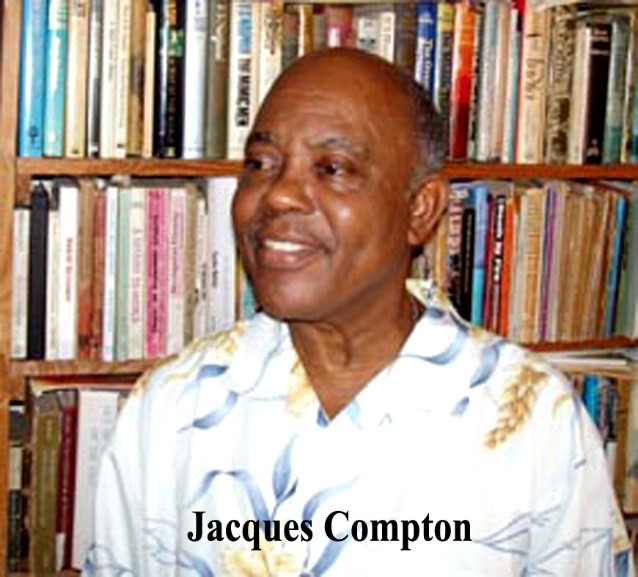
Qualifications are important, but we cannot overestimate the importance of passion, dedication, and commitment. There is a world of difference between someone simply fulfilling the requirements of a job and someone being passionate about what they do. The Derek Walcott Nobel Lecture is poorly attended because we don’t have a CDF dedicated to the success of the event. Yet turning attendance around is simply a matter of promotion, publicity, and sending out invitations.
Surely, with over 20 secondary and tertiary schools accounting for about 10 thousand students, we can at least fill the lecture hall with students even if that means we have to organize transportation for them. The exposure they would gain may well translate into lifelong involvement in art and culture. To add even more meaning to the Derek Walcott Nobel Lecture, instead of hosting a separate award event, why don’t we incorporate the award ceremony into the Lecture event, this way boosting its attendance and avoiding the extra cost of staging an award night.
The fact that, as part of the 2015 Nobel Laureate Festivities, award-winning poet, Modeste Downes, who hails from Vieux Fort, single-handedly (but with financial support from Invest St. Lucia and Southern Taxi Association) orchestrated 35 secondary and primary school students (and some of their teachers) from the South to meet and spent time with Derek Walcott at the Castries Central Library just two years before his death, demonstrates the doability of the above suggestions.
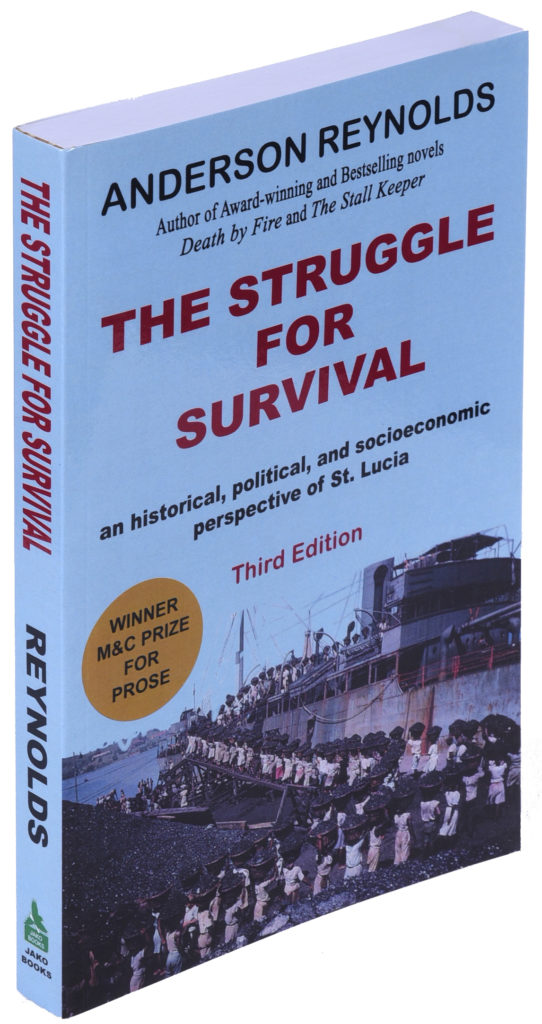
Beware of Square Pegs in Round Holes
The CDF scenario also means we have to be careful how we go about implementing the youth economy initiative. Sometimes the institutions we set up to facilitate say cultural activities and the development of artists, start behaving as if the program is all about them, they are the creators, and they conduct operations in a manner that attracts more attention to themselves than to the creators they are supposed to enable.
And oftentimes politicians used these new initiatives to reward party supporters with jobs and contracts, totally bypassing the people passionate and committed to the sphere of activity who for years have been engaged in the activity often with little financial gain. But no sooner the government change hands or the program money runs out, the people whom the politicians imposed disappear, leaving the dedicated, now weakened and demoralized soldiers, to carry on.
Obviously, this approach does great damage. The imposed people may not have any real interest in the program and may not have the requisite expertise and experience. Square pegs in round holes. Yet the new initiative could have served as an opportunity to reward good behavior and to strengthen the operations of the persons with demonstrated commitment and passion, the same persons who would continue the mission regardless of funding or which party is in power—sustainability
It is an amazing thing when a new administration takes hold of power. A new wave of people, full of enthusiasm and arrogance comes in, disdaining those they replaced, disregarding their accomplishments, discontinuing existing programs and organizations and starting their own. And the outgoing people who only yesterday behaved as if the whole world was kneeling at their feet, suddenly become invisible and totally disengaged, seemingly waiting for their adversaries to fail and to make a comeback.
Reopen the Walcott House
Under the previous Labour government, the house where the Walcott brothers were raised was transformed into a museum, the Walcott House, thereby helping to preserve a significant aspect of the country’s cultural heritage. Besides the Walcott House, work had already begun to transform the strip of Grass Street that encompassed the Walcott House into the Walcott House & Grass Street Urban Enhancement Development, further cementing the Walcott legacy and signaling that the government meant business when it spoke of protecting our national heritage. The Chastanet administration, apparently unmindful of culture as a public good, and in the name of running the country like a business, aborted the urban enhancement project; and the National Trust which was responsible for the management of the Derek Walcott House was forced to close it down when the prime minister cut off its subvention. The irony was that funding for the project may not have come from government coffers; the Taiwanese government had already donated EC$7.5 million of the EC$16 million required for its construction.
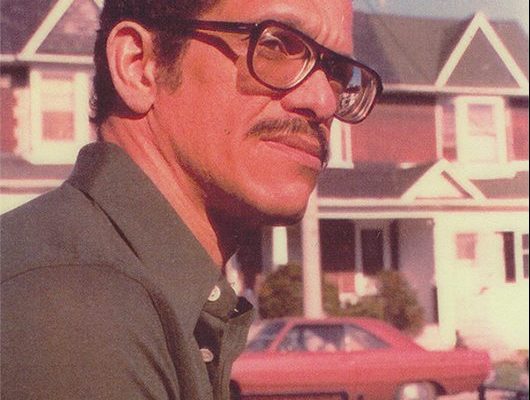
As winner of the Nobel Prize for literature, Derek Walcott is perhaps St. Lucia’s most celebrated son of the soil. So much so that each year the island hosts a month-long Nobel Laureate Festival in commemoration of its Nobel Laureates. Derek Walcott, along with his twin brother, Roderick Walcott, helped establish the 1950s St. Lucia Arts Guild that, as mentioned previously, led the way in West Indian theatre and sparked a cultural renaissance. So if, according to the prime minister, Philip J. Pierre, we are sincere about appreciating, celebrating, and preserving our cultural heritage and forging a national identity, what can be more fitting than immortalizing the Walcotts’ achievements. Won’t that be signaling to our youths that art and culture are important and that our way of life is on par with that of any other and deserves artistic expression?
Internationally acclaimed author, Jamaica Kincaid, who has been tipped to win the Nobel Prize any year from now, would agree. She was so appalled by the upkeep of the Derek Walcott House, that during her presentation of the 2017 Derek Walcott Lecture, she said that although she is not from St. Lucia, Derek Walcott has meant a lot to her as a writer and a Caribbean person. “He and his writing are repositories of the Caribbean journey.” She said that the upkeep of the House was a disgrace to the honor of the Nobel Laureate, and she would be willing to contribute to the maintenance of the House if that is what it will take. I wonder what she would say and do now if she caught wind that the Walcott House has now closed because of funding. I wouldn’t be surprised if she paid the prime minister, Philip J. Pierre, a special visit to insist that he reopens the Walcott House and complete the Walcott House & Grass Street Urban Enhancement Project.
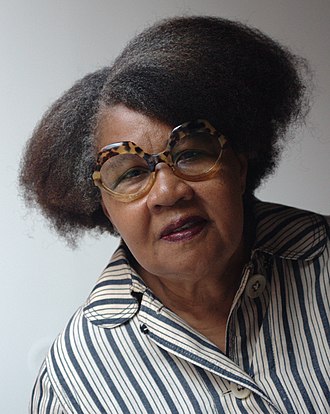
Reinstate the ArtReach Program and the St. Lucia Jazz and Arts Festival
The last Kenny Anthony administration was in many ways on the ball with regard to the youth economy; of course, it wasn’t called that then. In our first installment (Taking Stock) on the youth economy, we mentioned some of his administration’s youth employment and training initiatives. But the administration also deserves some recognition for helping to advance the creative industries. Under Kenny Anthony’s watch, the jazz festival spread throughout the island, allowing vendors and service providers in different communities to share in the spoils, and making it possible for the youngest and/or the poorest of St. Lucians to enjoy world-class music concerts.
Imagine the horizon-expanding impact on a child witnessing right in her community the best the world has to offer. It would be interesting to ascertain the number of St. Lucian youths who owe their involvement in music to the St. Lucia Jazz Festival. Indeed, thanks to the jazz festival, the island’s standard of musicianship and its staging of musical events have gone up a notch. Indeed the St. Lucia Jazz Festival has done nothing less than strengthened the structure of the music industry by providing artists exposure to the best the world has to offer and an international stage upon which to test and hone their craft, and by boosting the island’s capacity and knowhow to stage or host large events, musical and otherwise.
The government had also expanded the festival to include literature, theatre, dance, and visual arts events (hence changing its name to the Saint Lucia Jazz & Arts Festival), ensuring that St. Lucians benefited maximally from the festival and that generally speaking it helped stimulate the island’s artistic and cultural output. Clearly, this was an act of genius.

Besides the jazz festival, the administration also changed the name of the Ministry of Tourism to become Ministry of Tourism, Heritage, and the Creative Industries, thus emphasizing its focus on art and culture and on the youth. Under the creative industries department and the leadership of Christopher Hunte, the government rolled out the Community Artreach program, which entailed the staging of live music and artistic events on a weekly or biweekly basis in communities across the island. The events normally entailed a live band performing their own repertoire and backing up original artists, and the name of the event changed from community to community. For example, the one in Vieux Fort was called Fete Dimanch.
Some had criticized the program as just another handout, but in some ways it was yet another Labour government stroke of genius. It provided bands an alternative or additional source of income to that earned at the hotels; it helped develop musicianship; besides putting money in the pockets of artists, it allowed them to hone their skills; it brought communities together on a regular basis and provided them with quality, live entertainment; it created economic opportunities for food and refreshment vendors; and it even gave work to sound system operators providing the events with sound. The Community Artreach program was giving rise to a creative industry all on its own.
The Artreach program was short-lived. And of course, with the Chastanet administration, and in the name of running the country like a business, the jazz festival was turned from a democratizing undertaking to an elitist affair. We hope therefore that, at least for the sake of the youth economy, the Philip J. Pierre government reinstates the Community Artreach program and returns the jazz festival to its pre-Allen Chastanet mode.
Economic Linkages of the Cultural Industry
The closing of the Walcott House overlooked an important aspect of the cultural industry—its linkages with the rest of the economy. The Walcott Museum could serve as the focal point and interpretative center of a Nobel Laureate heritage tour. Other such heritage tours can include a Neg Maron Tour that takes participants to Fond Gen Libre, Maron Caves, and remnants of the sugar mills; a World War II Tour that speaks to the American War presence in Vieux Fort. Such cultural heritage tours would help diversify our tourism product beyond sun, beach, smiles, and manufactured accents. In that regard, the Kenny Anthony administration’s expansion of the jazz festival beyond music into literature, fashion, theatre, and visual arts was, let me repeat a second time, a stroke of genius. The concept can be taken further by staging book fairs, book reading and signings, art exhibitions, and theatre productions at the hotels, or enabling the tourist to patronize these activities offsite.

We often stress and rightly so the potential synergies between tourism and agriculture, but the tourism industry is also a major player in the cultural industry. It is the lifeline of the craft (though much of it is made in Guyana) and music industries (including cruise ships). So much so that show me a band that isn’t performing at the hotels, and I will show you a band that doesn’t exist. For some books, after their initial launch, visitors (both nationals and nonnationals) represent their largest market, with the hotels and Hewanorra Airport as the main outlets. The challenge then is for tourism to serve the non-music side of the cultural industry as well as it is now serving the music industry.
Government as Patron of the Arts
Government can help develop the cultural industry by becoming a patron of the arts. It should view the employment of artists in its various activities and programs not just serving as entertainment but as supporting the sector. A policy of purchasing books that meet certain criteria for all secondary schools and the public library system and also for certain government departments and overseas missions and ambassies could go a long way in supporting writers and making publishing books worth their while. So too would placing St. Lucian books on the reading list of secondary schools.
Patronage of the visual arts in terms of purchase and placement in public spaces and government offices at home and abroad would provide similar support to the visual artists. Imagine, if within a month of an author launching a book, government purchases for libraries, schools, departments and offices, and personal purchases by parliamentarians, cabinet ministers, and other high government officials total no less than 150 books, how much of a boost this would mean to the author. The prime minister spoke about appreciating and preserving our cultural heritage and that his administration will make sure that “African, Caribbean, and St. Lucian history is taught at all levels of our schools.” Well, government, both officially and unofficially, as a major patron of the arts would go a long way and would be leading by example.
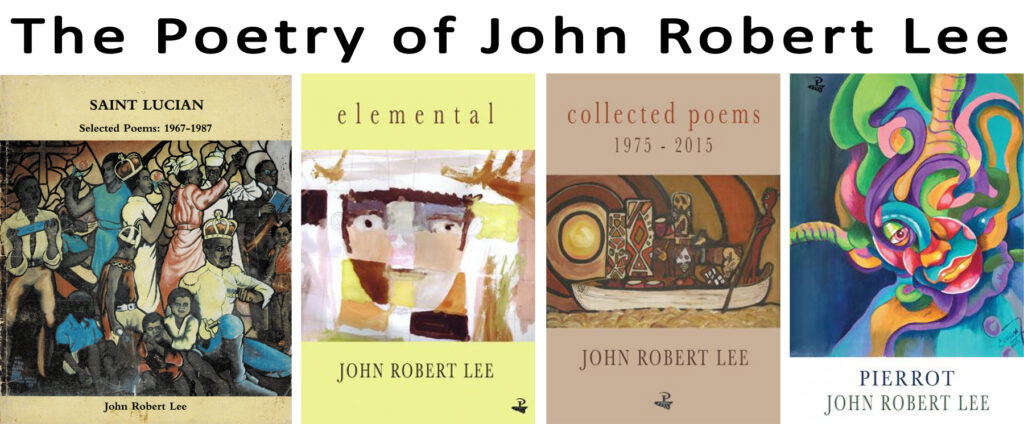
John Robert Lee, a leading St. Lucian poet and social and cultural commentator, seems in full agreement with the need to strengthen the structure of the cultural industry and the notion of greater government support for the arts. In an insightful piece on revitalizing and upgrading St. Lucia’s cultural institutions and programs, he called for re-envisioning CDF headquarters to include an expanded structure that would serve as a sales outlet for St. Lucian literature, arts, crafts, and music, and equipped with a restaurant/café and sufficient space to accommodate an art gallery, book launches, and other cultural activities, and to serve as a meeting place for writers and artist. He advocated for incorporating St. Lucian cultural studies in the school curriculum, teaching St. Lucian culture, history and literature in schools, and the establishment of a national museum, a national art gallery, and a national library. The poet also proposed the upgrading and strengthening of school and public libraries, providing stronger support to the Sessenne House, Walcott House, Joyce Auguste House and turning them into heritage centers to serve as cultural hubs.
The Need to Nurture and Support Talent
All over the country bright lights do miraculously appear without much coaxing or teasing from any official source. The lights may be in sports, in art and culture, in business, in technology. For example, in the Vieux Fort area several of these bright lights come to mind. Recently, Slyvinus “Theartiste Sly” Charles took St. Lucia by storm, first with his Vye Twizeen Dennery Segment group and their hit song Mahjee With Yourself, and then capturing the groovy soca monarch with Mix Up. We have a teenage musical phenom, Joel Pinel, composing, recording, and performing great uplifting music. We have the Imani Modeling Agency whose fashion models have been wowing audiences with their savvy fashion designs and elegant catwalks for over 25 years. We have Mathurin Emmanuel and Iyanola Pictures from Desruisseaux, Micoud, who with five movies under her belt, including the internationally award-winning movie, Ribbons of Blue, is singlehandedly pioneering the St. Lucia movie industry. When such lights brighten the night sky, in the spirit of the youth economy and nurturing and developing talent, shouldn’t the government seek out these lights and ask what can we do, how can we help you go forward? And to me, this is where the district reps come in. They should be intimately aware of what’s happening in their districts, so no sooner these bright lights manifest they would offer support, guidance, direct them to resources, marshal their governmental authority and resources to ensure that these lights expand and brighten not only the St. Lucian sky but that of the world.
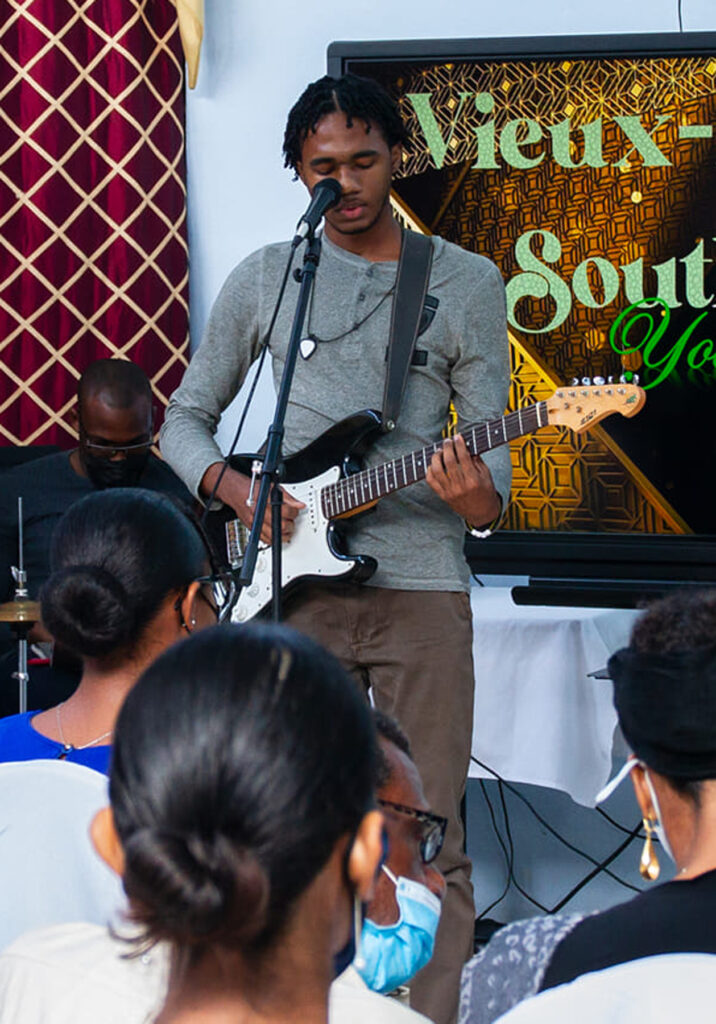
And this is where constitutional reform enters the picture. With their ministerial portfolios district reps barely have time to visit their districts much less pay attention to the many lights in their district that without attention will soon go dim. As recommended by the 2011 Constitutional Reform Commission and Dr. Stephen King in his passionate article Enough is Enough, and as further elucidated in No Man’s Land: A Political Introspection of St. Lucia, the position of district rep needs to be decoupled from that of cabinet minister. Meaning, district reps should be precluded from serving as cabinet ministers, this way they will be in a better position to fully dispense with their responsibilities as lawmakers, cabinet watchdogs, and parliamentary representatives. This reform recommendation has the additional benefit of introducing separation of powers (separating executive powers from legislative powers) and checks and balances, and according to No Man’s Land, it can be expected to help curb corruption. And to make the district rep position still worth the while of the politicians and to signal that cabinet ministers are junior to them, Dr. King recommends that their pay be at least 10 percent more than that of cabinet ministers.
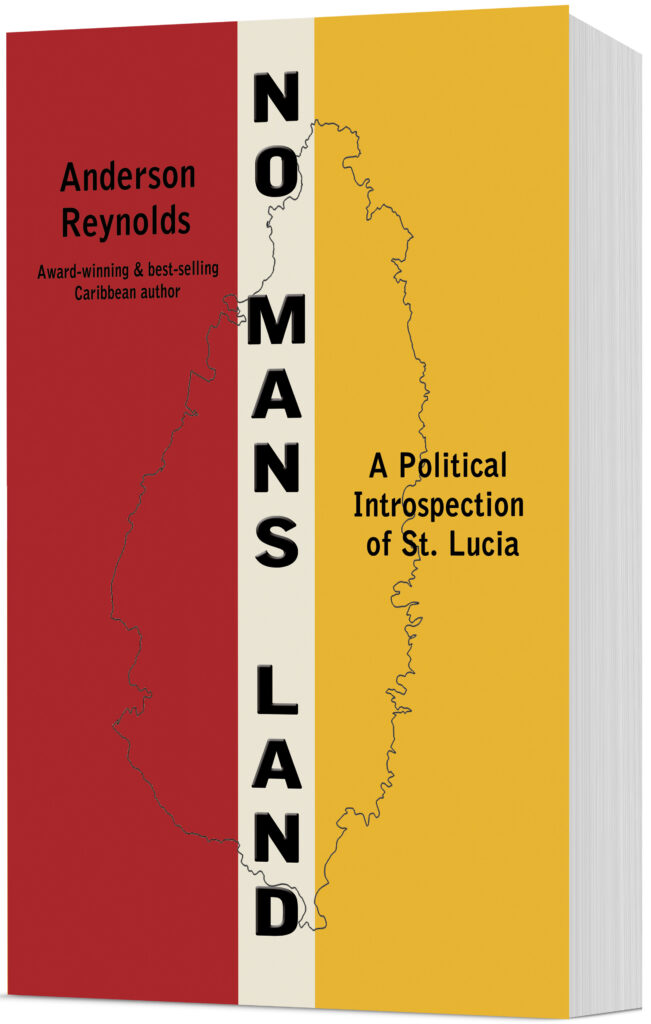
Instead of volunteering-ly coming to the aid of our aspiring young people, we act as if we are there waiting for them to fail, only coming to their aid after the rest of the world has embraced them. St. Lucia is very hard on young people. There are few avenues to realize their ambitions and high inspirations, which far too often meet with frustration and dead ends. They leave school and join a line of 10 thousand jobless other youths. According to Ras Isley, they have nowhere to go and nothing to do. The institutions set up to help them are sometimes their biggest stumbling block, either too apathetic to care, or providing assistance on the basis of political affiliation, friendship, and geography.
The groundswell popularity of Dennery Segment and the meteoric rise of Slyvinus “Theartiste Sly” Charles and other Dennery Segment artists to stardom suggests there is great value in appreciating and giving expression to your own culture, your own way of life. For years St. Lucian reggae artists have been trying with very limited success to make a mark on the world stage. Yet, suddenly, here comes a different set of St. Lucian youth, riding their own culture, exploiting their folk music, folk rhythms, and lifestyle to give rise to an artform unique to St. Lucia, an artform that comes from the people. And just like that, the world has taken notice. Just like that St. Lucia for the first time in its history has come up with a music all of its own.

It is interesting that we the establishment are putting next to nothing in place to occupy the young people in a positive manner, yet we are constantly telling them that they are too promiscuous, too vulgar, too disrespectful, too lazy, too much about instant gratification; in brief, they are no good. In exasperation, we throw our hands up, “What is wrong with children of today!” It is as if it never occurred to us that if we don’t provide the young people with positive alternatives, they are going to find their own ways to occupy themselves, ways we may not approve of.
Artists are expected to perform for nothing yet they have invested a lifetime of expenses and forgone income to arrive at their level of artistry. Instead of organizers viewing state-sponsored events as an opportunity to support artists and put as much money in their pockets as possible, they behave as if their job is to negotiate artist fees down to nothingness. Apparently, we fail to appreciate that the bright lights we seem to snuff could be the next Bob Marley, the next Bill Gates, the next Ronald Boo Hinkson, the next Derek Walcott or Arthur Lewis, putting St. Lucia on the globe, single-handedly giving rise to industries, helping to inspire countless future generations to greatness.
Come to think of it, St. Lucia is also very hard on older folks. Barely 50, they are discarded as old and therefore useless, relegating them to banding together in rum shops and drinking themselves to early deaths. Yet, with their wealth of experience, wisdom, know-how, and mental steadiness, these mature citizens are well equipped to help guide our youth as they attempt to conquer the world. What we don’t realize is that it is at that age and after that many years of living and concentrating on a sphere of activity that one gains a deep, thorough understanding and appreciation of the processes involved. That is partly why the invention of reading glasses was such a boon to mankind, because the eyesight of craftsmen and artists begin to fail just at the age when they are approaching the peak of their artistry.
The Youth Economy Installments
- Taking Stock: The Youth Economy
- The Youth Economy (Part II): Culture as an Engine of Economic Growth
- The Youth Economy (Part III): The Role of Government in Strengthening the Cultural Industry
Authors
Alexander Clarke is a business innovator and the founder and CEO of MSOLE. Dr. Anderson Reynolds is an economist and an award-winning author of five books. He is considered one of St. Lucia’s most prominent and prolific writers and a foremost authority on its socioeconomic history.
![]()


